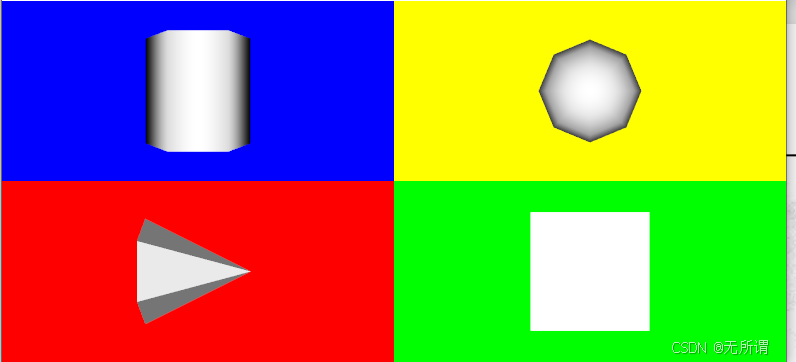在 DPDK 中,**EventDev** 和 **Ethernet (ETH) 驱动** 是两种不同的设备类型,分别用于事件驱动的异步处理和传统的网络包收发。然而,它们可以在同一个应用中协作使用,以实现更高效的数据流处理。
### 1. **EventDev 和 ETH 驱动的基本概念**
- **EventDev(事件设备)**:EventDev 驱动用于高效处理事件,通常用于异步任务,比如高并发的数据包处理或高效的控制消息传递。在 DPDK 中,EventDev 驱动通过事件队列来接收和发送事件。EventDev 设备通常用于处理一组相关的事件数据,而不是直接处理每个数据包。
- **ETH 驱动**:ETH 驱动用于直接接收和发送以太网帧(网络数据包)。通过 DPDK 的 `rte_ethdev` API,ETH 驱动允许你访问物理网卡,进行包的收发、队列管理等操作。
### 2. **EventDev 与 ETH 驱动的交互**
在某些应用中,可能希望将网络接口接收到的数据包通过 EventDev 进行处理。这是通过将 Ethernet 接口的接收数据包转交给 EventDev 来完成的。
#### 2.1 **ETH 接收数据包并通过 EventDev 处理**
在 DPDK 中,ETH 驱动负责接收网络接口的数据包。接收到的包可以作为事件被发送到 EventDev 设备的事件队列中进行进一步处理。
### 流程:
1. **ETH 驱动接收数据包**:通过 `rte_eth_rx_burst()` 从网络接口(如以太网卡)接收数据包。
2. **将接收到的数据包封装为事件**:接收到的数据包可以通过创建事件对象(例如 `rte_event`)来封装,这些事件对象可以携带数据包指针或其他上下文信息。
3. **将事件发送到 EventDev 设备**:通过 `rte_event_enqueue_burst()` 将事件推送到 EventDev 的事件队列中。
4. **EventDev 处理事件**:EventDev 通过事件队列异步处理这些数据包,可以根据需要进行复杂的处理操作,如包过滤、转发、负载均衡等。
#### 2.2 **ETH 驱动和 EventDev 设备的关系**
EventDev 驱动可以处理由 ETH 驱动接收的事件数据,但它不直接处理网络包本身。ETH 驱动提供的功能是接收和发送数据包,而 EventDev 设备则用于事件驱动的处理,通常在高吞吐量和低延迟的场景中应用。
### 3. **代码示例**
以下是一个简单的示例,展示了如何将从 ETH 设备接收到的数据包封装成事件并通过 EventDev 进行处理:
```c
#include <rte_eal.h>
#include <rte_ethdev.h>
#include <rte_eventdev.h>
#include <rte_mempool.h>
#include <stdio.h>
#define NUM_DEVICES 2
#define NUM_MBUFS 8192
#define MBUF_CACHE_SIZE 256
#define BURST_SIZE 32
#define EVENT_QUEUE 0
static struct rte_mempool *mbuf_pool;
static uint16_t eth_port_id = 0; // Ethernet port id
static uint16_t eventdev_id = 0; // Event device id
// 配置以太网设备
static void configure_eth_device(uint16_t port_id) {
struct rte_eth_conf port_conf = {0};
struct rte_eth_dev_info dev_info;
int ret;
rte_eth_dev_info_get(port_id, &dev_info);
printf("Configuring ETH device %u: %s\n", port_id, dev_info.device->name);
ret = rte_eth_dev_configure(port_id, 1, 1, &port_conf);
if (ret < 0) {
rte_exit(EXIT_FAILURE, "Failed to configure device %u\n", port_id);
}
ret = rte_eth_rx_queue_setup(port_id, 0, 128, rte_socket_id(), NULL, mbuf_pool);
if (ret < 0) {
rte_exit(EXIT_FAILURE, "Failed to setup RX queue for port %u\n", port_id);
}
ret = rte_eth_tx_queue_setup(port_id, 0, 128, rte_socket_id(), NULL);
if (ret < 0) {
rte_exit(EXIT_FAILURE, "Failed to setup TX queue for port %u\n", port_id);
}
ret = rte_eth_dev_start(port_id);
if (ret < 0) {
rte_exit(EXIT_FAILURE, "Failed to start device %u\n", port_id);
}
}
// 配置事件设备
static void configure_eventdev(uint16_t dev_id) {
struct rte_eventdev_info dev_info;
struct rte_eventdev_config dev_config = {0};
int ret;
rte_eventdev_info_get(dev_id, &dev_info);
printf("Configuring eventdev %u\n", dev_id);
dev_config.nb_event_queues = 1;
dev_config.nb_event_ports = 1;
ret = rte_eventdev_configure(dev_id, &dev_config);
if (ret < 0) {
rte_exit(EXIT_FAILURE, "Failed to configure eventdev %u\n", dev_id);
}
ret = rte_eventdev_queue_pair_setup(dev_id, 0, NULL);
if (ret < 0) {
rte_exit(EXIT_FAILURE, "Failed to setup queue pair for eventdev %u\n", dev_id);
}
ret = rte_eventdev_port_setup(dev_id, 0, NULL);
if (ret < 0) {
rte_exit(EXIT_FAILURE, "Failed to setup event port for eventdev %u\n", dev_id);
}
}
// 将网络数据包封装成事件并发送
static void send_packet_to_eventdev(uint16_t port_id) {
struct rte_mbuf *pkts[BURST_SIZE];
struct rte_event ev[BURST_SIZE];
uint16_t nb_rx, nb_events;
int i;
// 接收数据包
nb_rx = rte_eth_rx_burst(port_id, 0, pkts, BURST_SIZE);
if (nb_rx > 0) {
printf("Received %u packets on ETH device %u\n", nb_rx, port_id);
// 将数据包转换为事件
for (i = 0; i < nb_rx; i++) {
ev[i].event_ptr = pkts[i];
ev[i].queue_id = EVENT_QUEUE;
ev[i].priority = 0;
ev[i].sub_event_type = 0;
ev[i].data = 0;
}
// 将事件推送到 EventDev 设备的事件队列中
nb_events = rte_event_enqueue_burst(eventdev_id, 0, ev, nb_rx);
printf("Sent %u events to EventDev %u\n", nb_events, eventdev_id);
}
}
int main(int argc, char **argv) {
int ret;
// 初始化 DPDK 环境
ret = rte_eal_init(argc, argv);
if (ret < 0) {
rte_exit(EXIT_FAILURE, "Failed to initialize EAL\n");
}
// 创建内存池
mbuf_pool = rte_mempool_create("MBUF_POOL", NUM_MBUFS, sizeof(struct rte_mbuf),
MBUF_CACHE_SIZE, 0, NULL, NULL, NULL, NULL,
rte_socket_id(), 0);
if (mbuf_pool == NULL) {
rte_exit(EXIT_FAILURE, "Failed to create mbuf pool\n");
}
// 配置 Ethernet 设备和 EventDev 设备
configure_eth_device(eth_port_id);
configure_eventdev(eventdev_id);
// 事件循环:接收数据包并通过 EventDev 发送事件
while (1) {
send_packet_to_eventdev(eth_port_id); // 从 ETH 接收并发送到 EventDev
rte_delay_us_block(1000); // 延迟1毫秒
}
return 0;
}
```
### 4. **代码分析**
- **ETH 接收数据包**:在 `send_packet_to_eventdev()` 函数中,使用 `rte_eth_rx_burst()` 从 ETH 设备接收数据包。
- **封装为事件**:将接收到的数据包封装为事件对象(`rte_event`)。每个事件对象包含数据包指针(`event_ptr`),并设置队列 ID 和其他信息。
- **发送到 EventDev**:将事件对象通过 `rte_event_enqueue_burst()` 函数推送到 EventDev 的事件队列中进行处理。
### 5. **总结**
在 DPDK 中,ETH 驱动和 EventDev 驱动通过事件队列进行交互,可以让网络数据包的处理变得更加高效,尤其是在需要异步处理大量数据时。通过将接收到的数据包封装成事件并通过 EventDev 进行处理,能够实现灵活的事件驱动的网络应用程序。这种方式可以减小轮询的开销,提高数据处理的并发性和吞吐量。



















